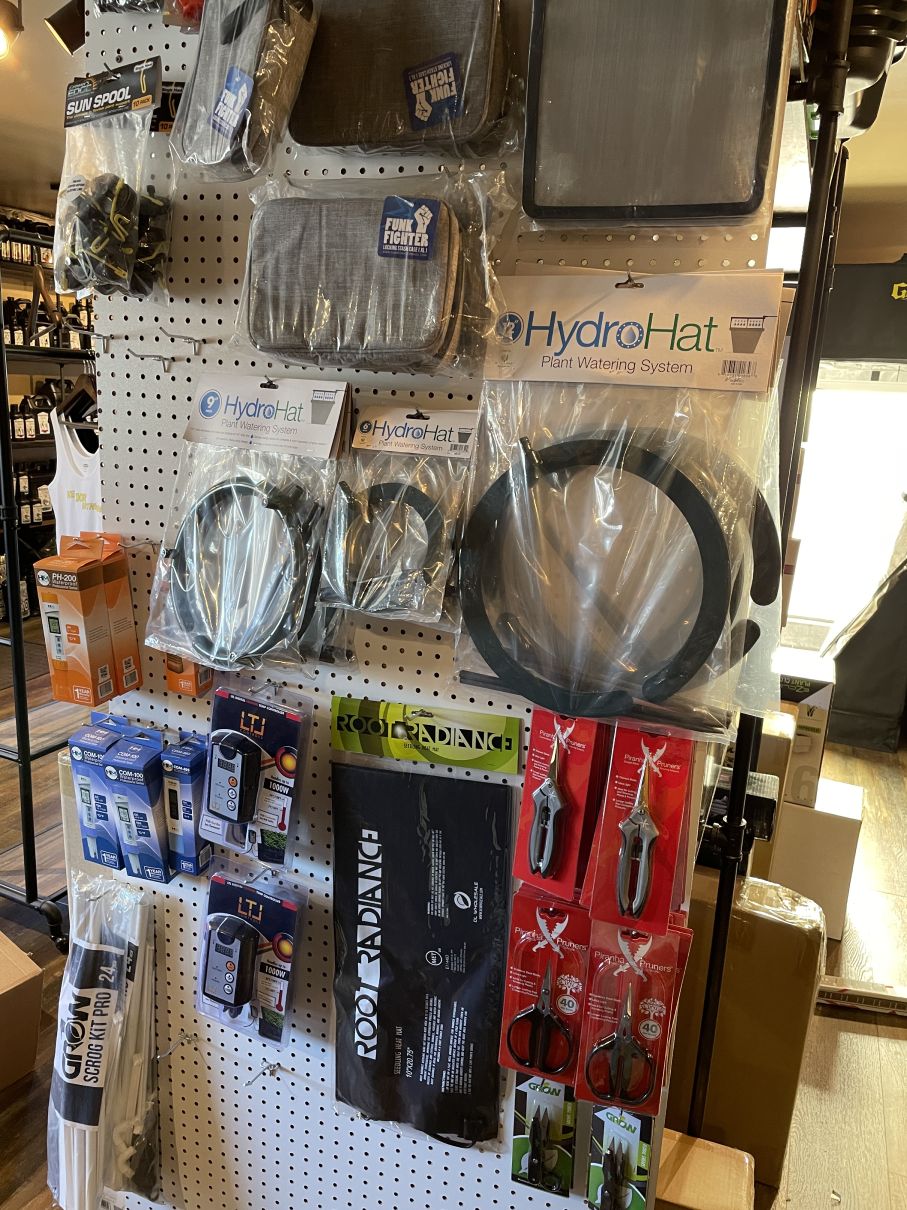The Ultimate Guide to Hydroponic Equipments and Techniques
Worldwide of modern agriculture, hydroponic systems have emerged as a revolutionary method for growing plants without soil. The meticulous balance of water, nutrients, and light in hydroponic configurations uses an appealing choice to typical farming techniques. As we uncover the intricacies of hydroponics in this thorough overview, we will certainly browse with the different kinds of systems, explore the crucial nutrients essential for plant growth, and look into advanced methods that can substantially boost returns. But what happens when common concerns emerge in hydroponic systems? Remain tuned to unwind the troubleshooting approaches that can make or break an effective harvest.
Advantages of Hydroponic Equipments
Hydroponic systems offer a wide variety of benefits, consisting of reliable resource utilization and accurate nutrient distribution to plants. By supplying a controlled environment for plant development, hydroponic systems enable optimal water and nutrient use, resulting in greater returns contrasted to traditional soil-based farming. This effectiveness not only saves resources however also reduces waste, making hydroponic systems ecologically pleasant.
Furthermore, the exact distribution of nutrients in hydroponic systems permits personalization based on the certain needs of each plant selection. This targeted approach makes sure that plants receive the right balance of important nutrients, promoting healthier growth and lessening the danger of nutrient deficiencies or inequalities. Additionally, the capacity to keep an eye on and readjust nutrient levels in real-time maximizes plant efficiency and overall crop top quality.
Moreover, hydroponic systems eliminate the demand for herbicides and chemicals, as the closed-loop system reduces the threat of pests and diseases that are generally found in soil-based agriculture - The Indoor Earthworm. This not just profits the plants and the atmosphere yet additionally adds to creating cleaner, healthier crops for consumption
Types of Hydroponic Setups

Deep Water Culture (DWC) includes putting on hold plant origins in a nutrient remedy, permitting for adequate oxygenation. Nutrient Movie Technique (NFT) uses a superficial stream of nutrient option streaming over the plant roots, providing a continuous supply of nutrients. Ups and downs systems flood the plant origins at intervals, ensuring they obtain nutrients and oxygen. Trickle systems involve dripping a nutrient remedy onto the plant roots, using specific control over feeding. Aeroponics mists the plant roots with a nutrient solution, making the most of oxygen absorption.
Each kind of hydroponic arrangement has its advantages and is matched to different plant ranges and development stages. Recognizing the distinct attributes of these systems can help hydroponic cultivators choose one of the most ideal setup for their specific needs and preferences.
Vital Nutrients for Hydroponics
In hydroponic systems, plants depend on a precise balance of important nutrients to thrive and grow effectively. These vital nutrients are critical for various plant features such as photosynthesis, origin growth, and total growth. The primary macronutrients called for by plants in hydroponic systems are phosphorus, potassium, and nitrogen. Nitrogen is necessary for leafy green development, phosphorus help in root growth and flower/fruit manufacturing, while potassium assists in total plant wellness and condition resistance.
In addition to macronutrients, plants additionally need additional nutrients like sulfur, calcium, and magnesium, in addition to trace elements such as iron, copper, zinc, and manganese (The Indoor Earthworm). These nutrients are important for making sure that plants have all the essential structure blocks to execute essential biological procedures

Advanced Strategies for Optimum Yield
To attain optimal returns in hydroponic systems, growers can implement advanced techniques that enhance plant development and productivity. One such strategy is using supplementary illumination. By providing man-made light sources such as LED or high-pressure salt lights, cultivators can expand the variety of light hours plants obtain daily, promoting faster development and boosted returns. Another sophisticated strategy is the application of carbon dioxide supplementation. Enhancing the degrees of carbon dioxide this page in the growing environment can wikipedia reference stimulate photosynthesis and increase plant growth dramatically. In addition, using methods like plant training and trimming can assist optimize light distribution and air flow, making sure that all components of the plant obtain sufficient light and nutrients. Furthermore, using automated systems for nutrient distribution and surveillance can aid preserve ideal nutrient levels, lowering the risk of shortages or imbalances that can impede plant development. By integrating these sophisticated techniques right into their hydroponic systems, growers can make the most of yields and achieve plentiful harvests.
Troubleshooting Common Hydroponic Issues
One widespread issue is nutrition shortages, where plants lack essential components for healthy growth. Maintaining the appropriate pH range certain to the plant being grown is crucial for optimum nutrient uptake. By promptly recognizing and dealing with these common hydroponic issues, cultivators can preserve healthy plants and make best use of yields in their hydroponic systems.
Verdict
In verdict, hydroponic systems provide numerous advantages for growing plants successfully. With cautious preparation and focus to detail, hydroponic systems can reinvent the method plants are grown, leading to even more effective and sustainable farming techniques.
By giving a regulated atmosphere for plant development, hydroponic systems enable optimal water and nutrient use, leading to higher returns contrasted to traditional soil-based cultivation. The Indoor Earthworm. Nutrient Film Technique (NFT) makes use of a superficial stream of nutrient solution streaming over the plant roots, offering a continuous supply of nutrients. Tracking and adjusting nutrient degrees based on plant growth phases is important to preventing vitamins and mineral shortages or poisonings and taking full advantage of plant productivity in hydroponic systems
Furthermore, using techniques like plant training and pruning can aid enhance light distribution and air flow, making sure that all parts of the plant receive appropriate light and nutrients. Using YOURURL.com automated systems for nutrient distribution and tracking can aid maintain ideal nutrient levels, reducing the danger of deficiencies or imbalances that can prevent plant growth.